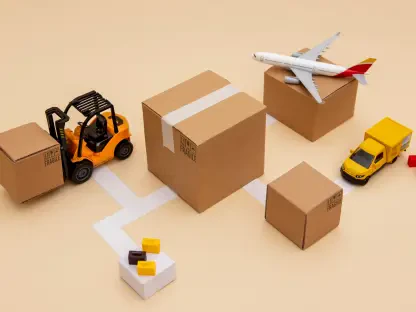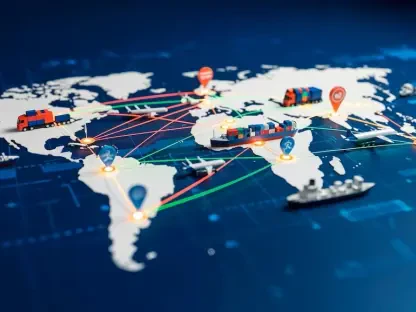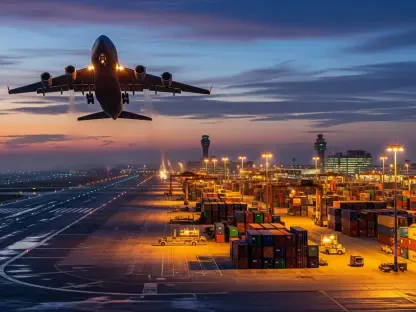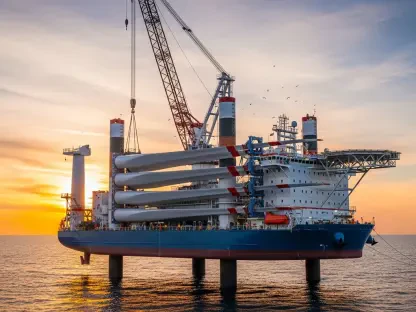In today’s rapidly advancing digital age, the demand for seamless connectivity has extended into train travel, where consistent internet access has become a fundamental expectation. Rohit Laila, an expert with decades of experience in logistics and an advocate for innovation, shares his insights on how cutting-edge technology is reshaping the rail industry.
Can you explain the current challenges faced by train operators in providing consistent internet connectivity to passengers?
The primary challenge is the lack of robust network infrastructure along long, remote railway routes. Cellular networks, especially in isolated areas, often fail to provide continuous coverage. Despite advancements in 4G and 5G, building such infrastructure is financially daunting and technically challenging, leaving significant connectivity gaps that train operators need to bridge.
How do traditional cellular networks compare to low Earth orbit (LEO) satellites in terms of connectivity for trains?
Traditional cellular networks rely heavily on terrestrial infrastructure, which is limited by geographical constraints and high costs. LEO satellites, however, operate at high altitudes, providing a wide coverage area that bypasses these terrestrial hurdles. They offer an alternative route for achieving consistent connectivity, particularly in remote areas that struggle with cellular signal.
What are the major advantages of LEO satellites over geostationary (GEO) satellites for on-train internet connectivity?
LEO satellites provide several key advantages. Their lower altitude significantly reduces signal latency and boosts data throughput, creating a faster and more efficient communication system. They offer cost-effective solutions due to lower launch energy requirements and form a mesh network for higher reliability by allowing cross-linking between satellites; if one satellite fails, others can maintain the service.
How does Starlink’s solution for trains stand out in the market of LEO technology?
Starlink leads the LEO market with an extensive array of satellites in orbit. Their Electronic Phased Array Tiles are uniquely designed for high-speed travel, delivering high-throughput and low-latency internet suitable for trains moving up to 400 mph. This capability makes Starlink particularly beneficial for trains that require consistent connectivity across various speeds and terrains.
How does Icomera integrate multiple network types, such as LEO satellites and 5G cellular networks, to enhance train connectivity?
Icomera employs an advanced aggregation platform to seamlessly combine different network types. This approach leverages the strengths of both LEO satellites and 5G cellular networks while allowing one to compensate for the other when connections falter, thus ensuring stable, high-performance internet service throughout train journeys.
What have been the results of Icomera’s LEO satellite internet deployments on trains?
The deployments have been remarkably successful, creating an inner-city 5G equivalent in rural train environments. By aggregating Starlink terminals, we’ve achieved over 200 Mbps throughput and latencies under 40 milliseconds. Network aggregation plays a critical role, maintaining stability by integrating Starlink with terrestrial connectivity, thus preventing service interruptions.
How can the integration of LEO satellite technology improve the onboard experience for passengers beyond internet connectivity?
Beyond providing internet access, LEO satellite technology facilitates real-time passenger services such as up-to-date travel information and entertainment. It also supports operational enhancements like remote diagnostics, improving safety, maintenance forecasting, and overall onboard service quality.
What are the future implications of advanced connectivity solutions for train operators in terms of operational efficiencies?
Advanced connectivity opens pathways for significantly improved operational efficiencies. With real-time data and remote monitoring capabilities, operators can drastically reduce downtime, enhance predictive maintenance, streamline train schedules, and improve energy management, all of which contribute to more efficient train operations.
In what ways does Icomera’s hybrid connectivity approach support real-time monitoring and diagnostics for operators?
Our hybrid approach enables operators to gather and analyze real-time data, ensuring prompt diagnostics and proactive maintenance. This connectivity supports systems management, driving improvements in operational reliability, passenger safety, and service quality, thus optimizing the entire rail network’s performance.
How does Icomera envision its role in the future of the rail industry’s digital transition?
We see ourselves as key players in propelling the rail industry’s digital transformation forward. By continually pushing the boundaries of connectivity solutions, we aim to facilitate an environment where trains operate with greater efficiency, reliability, and customer satisfaction, ushering in a new era of digitally connected travel.









